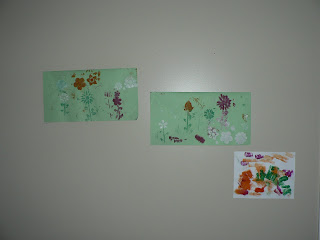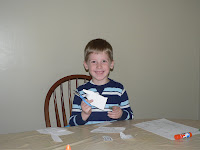The first one likening traditional school as a "factory model of education".
The second was a quote from Maria Montessori,
“If a child can't learn the way we teach, maybe we should teach the way they learn."
---------------------------------------------------------------------------------------
So where have my thoughts been? Really to try and find my "niche" even after 15 years in the field. There was a measure of discontentment a bit ago and I thought it was because I wished to be back center-based. I felt that I couldn't offer what I'd like to at my home-based program. So, I spent a school year back at a center-based program. Well, needless to say, I'm back home. And really, I am much more content.
Something that bothers me is this thought of "socialization." I have to tell my families, I really can NOT provide the social aspect that a center-based program provides. So why is that? I would typically state, I'm very small group (which has immense benefits) and often less than 6 children in attendance with some being much younger than preschool age. Is this a bad thing? Not too long ago I might have said yes. I still feel I have to make them aware of this situation but I have a different opinion now. The reason why I thought it wasn't the best situation was because I was lacking in preparing them for this "factory model of education". Thinking of it from that perspective...they are going from maximum six children, mixed aged group to 25-30 students all at the same age...definitely not all at the same development. And with this generation, there is more violence and disrespect for adults, peers, and materials. And, in reality, there is minimal supervision. So, for some children, especially young 5s, I haven't prepared them for the actions and choices of their peers, the competition that's going to be shown and how to deal with it because that all comes with experience and when we have such a small group...really, they don't experience it. I've see children who have learned how to problem solve and use their words get into that classroom of 25-30 kids and only have a handful of kids that do the same. What happens? If no one else does it, they "have" to get their feelings across and the teacher doesn't want to them to tattle tale so they fall back on physically reiterating their point...because that's what the rest do! Oh my. It annoys and saddens me immensely to see this. But that's reality. My children do attend public school, and no, I'm not planning on homeschooling...but there are some benefits to it if it's done "correctly" (definitely an opinion there!) Another thought, behavior problems. There is a lot of "behavior problems" in public schools. Maybe it's because there are so many children in one place that we just hear more of them. But, I don't think that's the real reason. Consider the competition that is going to come with having 25-30 same age children in the classroom. And some are "up to speed" and some are "advanced". So, a child who can not meet the expectations of the teacher or their peers are going to do what? Act out, yep! You bet they are. Surely won't want to bring attention to their "lack." Okay, so now we have the students who would be considered "advanced". But, the teacher must bring the whole class up to a certain level and with all the time spent there...the more advanced ones get "left out." And they become bored. And so what do they do? Act out! So, what do many teachers do? (Let me just state here...I have HIGH respect for public school teachers.) They "treat the symptoms". They spend a lot of time "correcting the behavior" but not really getting to the root of the problem. Really, I believe that most behaviors come from somewhere, often leading back to an academic lack due to learning style or immaturity. There is almost always an underlying cause. But with such a large group of students, who has the time to observe these children, really notice what's going on and finding the root cause and treat it? They don't. So one thing leads to the next and these children become labeled with "behavior issues" and are definitely looked and treated differently...which starts the never ending cycle of behavior problems, no higher-level of thinking, feeling poor about themselves and back to behavior problems.
So, M. Montessori's thought...if they aren't learning, why do we start teaching them they way they learn. Is the traditional way we are teaching really appropriate for the way children develop and learn? I think back to years ago. What was it like? It was definitely less competitive as the group of people together were mixed age group. Grandparents, parents, large families with much older siblings to very young siblings, aunt/uncles and so on all living and working nearby or even together. And one about "formal" school? It was a one house school room...with mixed aged groups with them all working together to help each other. So, do we see a pattern here? Mixed age groups. Hmmm...maybe Maria M. has a point. Almost all of their classes now are mixed age group. At a preschool level you'll see ages 2-6 yrs and an elementary level you'll see 6-12 years. Is it easier on the teacher? No, which I think is one reason why we often try to put like ages together...but is it better for the students? In the long run...I think so. Consider this...students all working together to help each other...provides a sense of community. There was definitely room for children to develop at their own speed. And if they didn't get it the first go around...it was always repeated somewhere/somehow. Hmmm...just some thoughts of mine lately. I'm sure there will be more as the days go by.
I'm definitely drawn to Montessori approach...but I also have some qualms with today's Montessori's. Most people do not stick with just one philosophy/approach. We take a little from here and a little from there to make our own. But I do want to reiterate that it's definitely okay if your philosophy changes over the years. Experience definitely does play a part it in. I would say that I was all for "center-based" mainly because my formal education was training me for this traditional model of schooling. But, time and experiences have gone by and I find myself reviewing just what I feel and believe.
Hope my ramblings cause you to review your own thoughts and beliefs about education. :-)














































